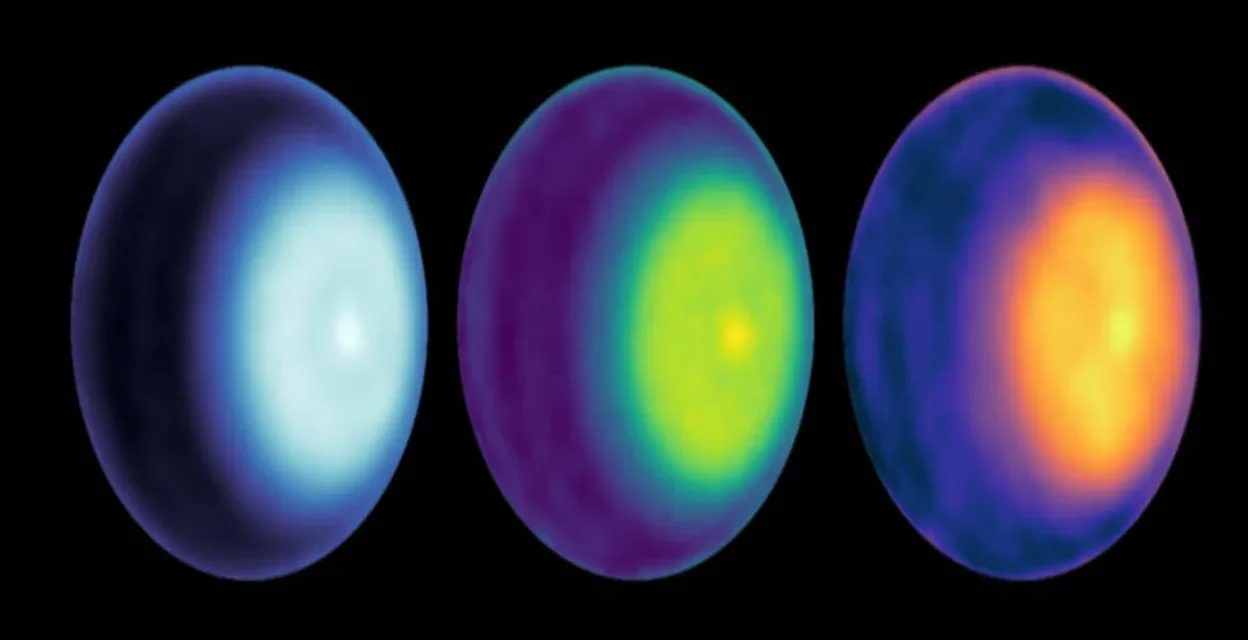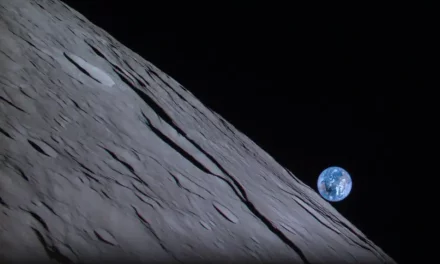
Nasa Observes A Polar Cyclone On Uranus For The First Time3 min read

For the first time, NASA scientists have found strong evidence of a polar cyclone on Uranus. The phenomenon was observed at the north pole of the planet.Researchers were able to get “unprecedented views” of the ice giant by using ground-based telescopes, owing to the position of the planet in its orbit.Here’s more about the latest findings.
Why does this story matter?
- Uranus might be a far more mysterious world than what we had originally assumed.
- The latest findings confirm a “broad truth” about all planets which have a substantial atmosphere in our solar system, according to NASA.
- “Whether the planets are composed mainly of rock or gas, their atmospheres show signs of a swirling vortex at the poles,” the agency said.
Uranian polar features similar to other gas giants
By observing radio waves emitted by Uranus, researchers spotted a “compact feature” at the north pole of the planet, which appeared to be warmer than its surroundings.“This feature likely indicates the presence of a polar cyclone” notes the study published in Geophysical Research Letters.Further, Uranus’s polar cyclone “shows similarities to polar features observed on other giant planets in the solar system.”
The observations were made using Very Large Array observatory
With the help of the Very Large Array observatory in New Mexico, scientists could take a closer look at Uranus’s clouds.The observations, obtained in 2015, 2021, and 2022, went deeper into Uranus’ atmosphere than any before, notes NASA.The team found that the circulating air at the planet’s north pole seemed to be warmer and drier—chief characteristics of a strong cyclone.
Since 2015, researchers have received better views of Uranus
Uranus’s position in its orbit has been crucial for the latest finding.Uranus takes 84 years to complete a full orbit around the Sun. For the past few decades, the planet’s poles weren’t pointed toward Earth.However, since about 2015, scientists have been able to get better views and also managed to look deeper into the planet’s atmosphere at the poles.
‘Uranus is a much more dynamic world’
“These observations tell us a lot more about the story of Uranus. It’s a much more dynamic world than you might think,” said Alex Akins, the study’s lead author. “It isn’t just a plain blue ball of gas. There’s a lot happening under the hood.”
Uranus’s cyclone resembles those seen on Saturn
The newly discovered cyclone on Uranus, with its compact shape and warm and dry air at its core, is much like the cyclones observed on Saturn.With the latest findings, cyclones or anti-cyclones, which rotate in the opposite direction, have now been identified at the poles on every planet in our solar system except for Mercury, said NASA in a blog post.
Cyclones on Uranus and Saturn are locked at the poles
Unlike the cyclones we see on Earth, those on Uranus and Saturn do not drift and are locked at the poles. Researchers will be closely monitoring the newly discovered Uranian weather formation to see how it evolves in the coming years.



















I really like your blog.. very nice colors & theme. Did you make this website yourself or did you hire someone to do it for you? Plz answer back as I’m looking to design my own blog and would like to know where u got this from. thanks